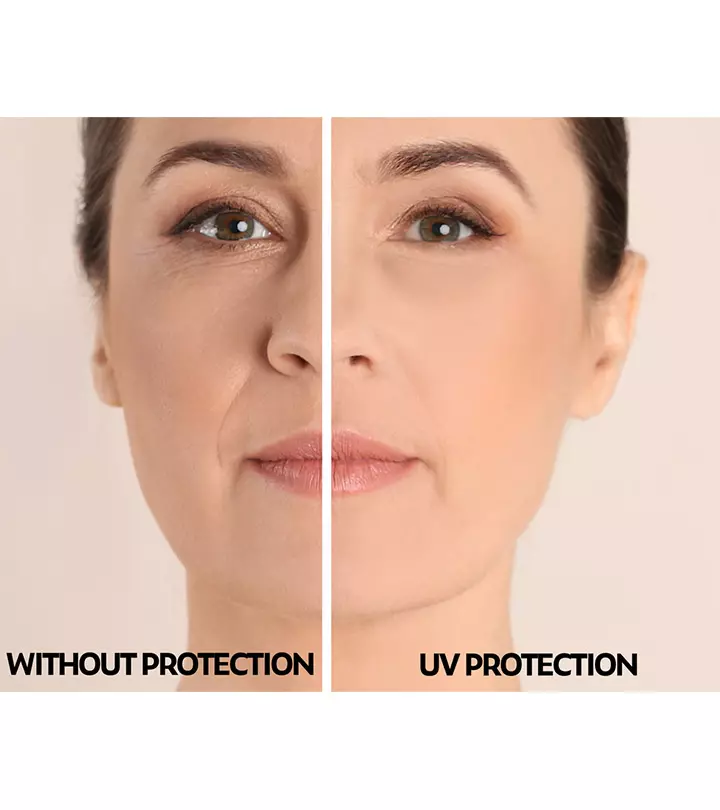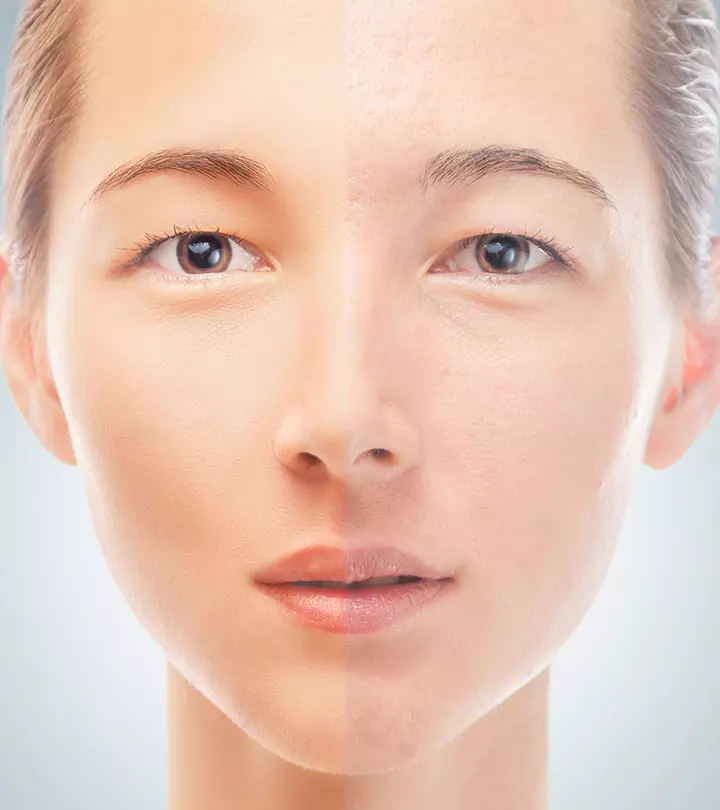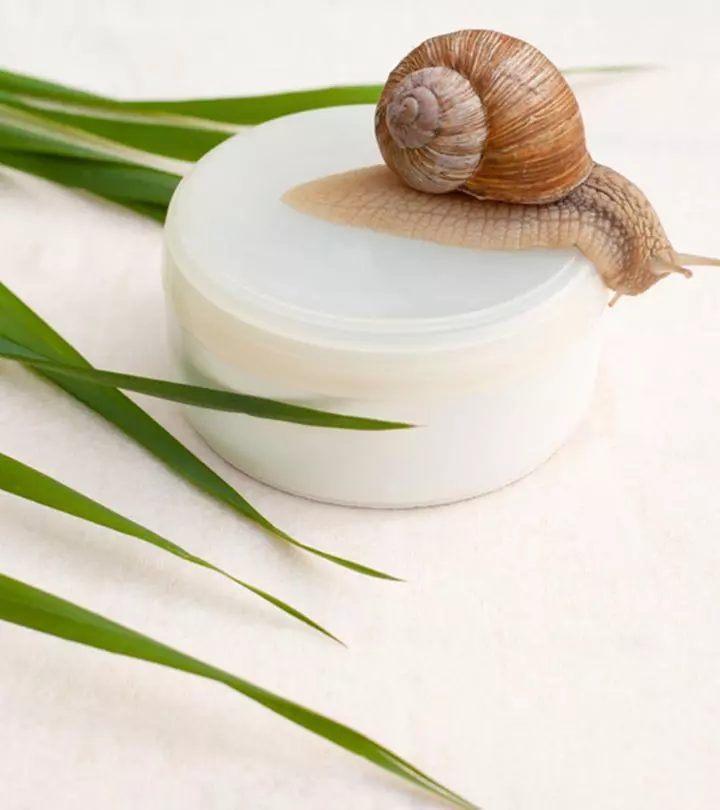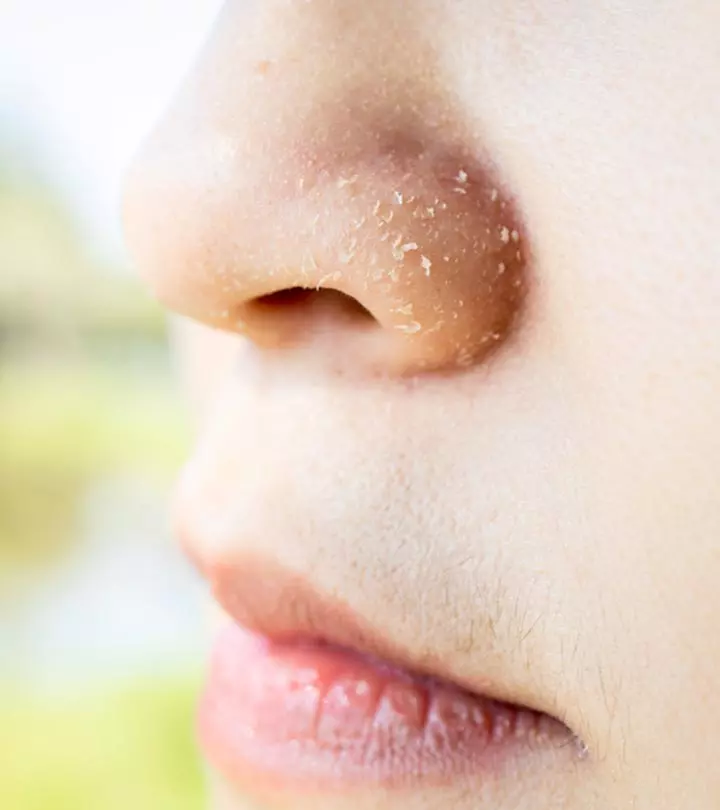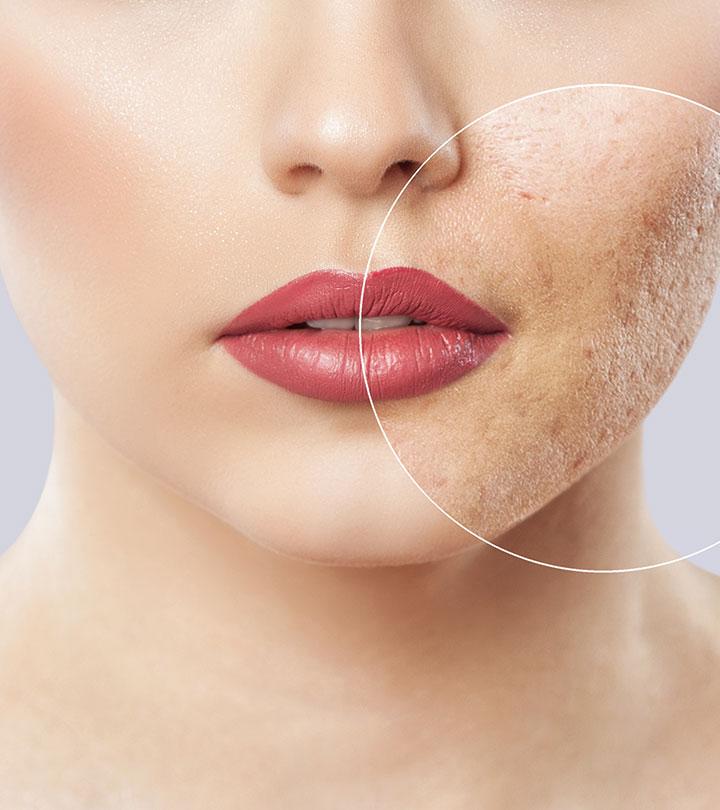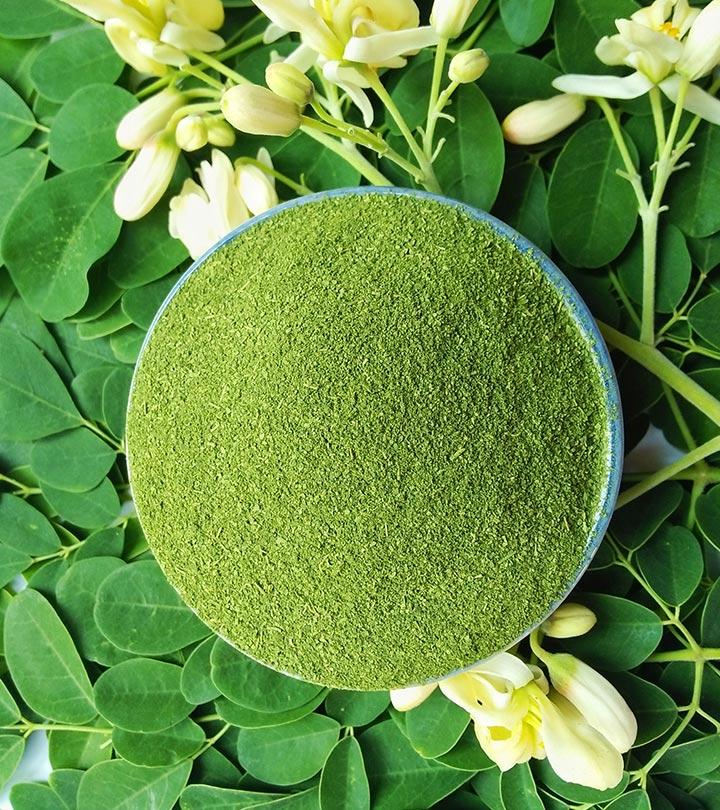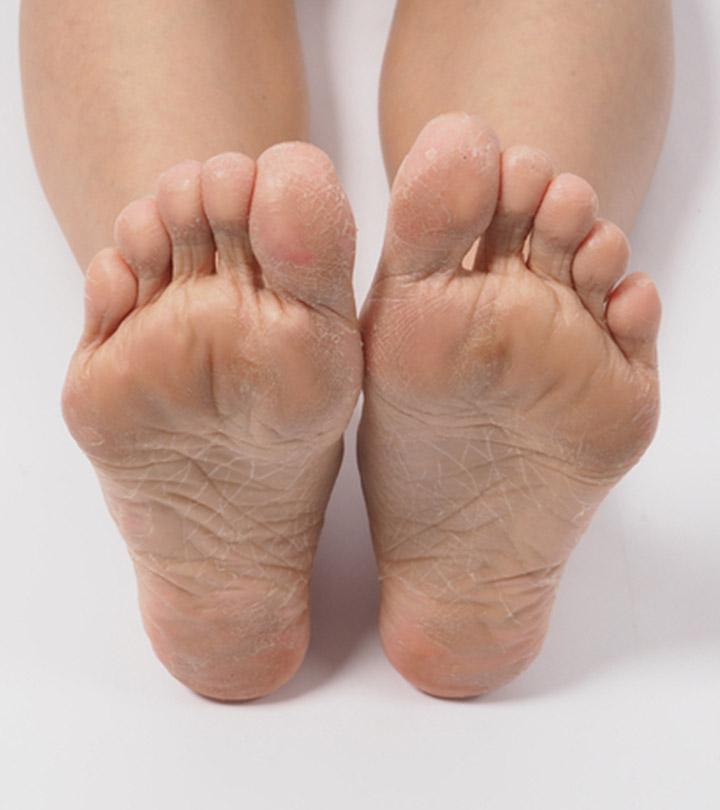What Is Acid Mantle Of The Skin And How To Repair It?
Must-know facts about skin’s acid mantle and easy ways to fix it when it is damaged.

Image: Shutterstock
Your skin forms a protective barrier around all of your important organs and keeps viruses, bacteria, grime, dust, and other environmental irritants at bay. But, the acid mantle of the skin is equally important.
While your skin is responsible for some of the protection, its acid mantle is another player that creates a protective layer in return. It is a lesser-known but equally significant component that forms a physical barrier against microorganisms and locks the moisture in your skin.
In this article, we discuss how the acid mantle of your skin is important for skin health and what you can do to boost its effectiveness while also protecting your skin. Keep reading also to learn how to fix it when it gets damaged!
In This Article
What Is The Acid Mantle Layer Of The Skin?
‘Acid mantle’ is a term coined by German researchers in the late 19th century. These researchers were studying the skin properties and the pH of the skin. They discovered the skin is acidic, with a pH ranging between 4.7 to 5.75 (1).
The acidic nature of the skin is due to a combination of sebum (secreted by the oil glands on the superficial layer of the skin), sweat, and other secretions. The acid mantle coats the skin in a thin film, increasing the acidity of its superficial layer. It prevents harmful microorganisms from penetrating the skin as they prefer a higher pH (1).
When compromised, it can lead to many skin woes, like dry skin, acne breakouts, and rosacea. As a result, the acid mantle has been garnering attention from skin care specialists and enthusiasts.
Several skin care brands now cater to specifically protecting this acid layer of your skin to improve its health. Let us have a look at how exactly it can improve your skin condition.
Why Is The Acid Mantle An Essential Part Of Skin Health?
The acid mantle is a thin film on the skin’s surface. It forms a physical barrier against microorganisms – bacteria, viruses, and fungi. The acidic nature restricts their growth, protecting your skin from infection. Together with the natural microbiome on your skin, it maintains the healthy barrier of your skin (2).
A blogger, having battled hormonal cystic acne for years, describes the importance of skin barrier repair for her: “After a couple weeks of working on it… I noticed an amazing improvement in my skin (i).” She adds, “It felt like all my pores made one big collective sigh and for the first time since I was 14, my skin is actually starting to GLOW.”
Another important job of the acid mantle is locking the moisture into your skin. It prevents the skin from drying out and keeps it hydrated and healthy.
In short, the acid mantle is like an invisible raincoat you never knew you were wearing. It protects you against the onslaught of microorganisms, dust, and other harmful factors.
What Happens When The Acid Mantle Is Damaged?
It can be difficult to identify when the acid mantle of the skin gets damaged. This is because the signs of its disruption can be very subtle and vague.
As the acid mantle maintains a healthy microbiome on the superficial skin layer, any disruption to it may lead to inflammatory skin conditions like eczemai A medical disorder wherein areas of the skin develop rough patches, are irritated, and develop blisters that bleed and itch. , psoriasisi A skin condition that causes a rash with itchy, scaly patches, most commonly on the knees, elbows, trunk, and scalp. , acne, and premature aging. When the barrier is not intact, it can cause increased sensitivity to allergens and contact dermatitis as well (1).
Redness of the skin and irritation are common when the acid mantle gets disrupted. Other signs include rashes, dryness, skin inflammation, flaky skin, and increased sensitivity to skin care or cosmetic products.
 Quick Tip
Quick TipSo, what can cause this disruption? Find out in the next section.
What Can Compromise The Acid Mantle?
The use of an abrasive cleanser can disrupt the acid mantle of the skin. A non-soap-based facial cleanser is often more neutral or acidic as compared to a soap-based facial cleanser. Soap-based ones can irritate your skin by stripping away the acidity from the superficial layer of your skin, which damages the skin and makes this product not suitable for people with sensitive skin.
Also, if the water you are using to wash yourself is alkaline, it can alter the pH level of your skin (3). Rebalancing your skin pH level is vital. Use high-quality skin products to prevent your skin from getting exposed to alkaline chemicals.
Here are some other things that can compromise the acid mantle of the skin:
- A humid or dry environment
- Exposure to allergens, irritants, and pollutants
- Exposure to harsh alkaline chemicals
- Constant exposure to the sun
- Excessive sweating
- Prolonged use of steroids
- Genetic predisposition to certain skin conditions like atopic dermatitis and psoriasis
How Long Does It Take To Repair The Acid Mantle Of The Skin?
Your skin requires about a month to repair the acid mantle – the time it takes for the skin cells to renew. You can shorten this duration if you take precautions and protect your skin from further damage.
Here are some ways in which you can repair the acid mantle.
How Do You Fix Or Repair The Acid Mantle?
If you come into contact with the various irritants that can possibly strip the natural acid film from your skin, take the following steps to ensure you repair any disruptions in the acid mantle.
1. Use An Oil Cleanser
Oil-based facial cleansers and body washes can clean your skin without disturbing the microbiome layer and the skin acid mantle. Choose a product with a pH between 4.5 to 6.5. If you are unsure about a product’s pH, call the customer service of the brand. There are also tons of review websites for skin care products that list this information.
2. Use A Facial Toner
A water-based toner can help hydrate and soothe your skin and rebalance its pH. Avoid harsh astringent toners as they can do more harm than good.
3. Moisturize Your Skin
Moisturize your skin regularly with a gentle emollient moisturizer. It will provide adequate support to the skin as it repairs itself from all the damage. Moisturization will also help lock in the moisture content in your skin (3).
 Quick Tip
Quick Tip4. Avoid Exposure To Natural Elements
The best way to preserve your skin is by limiting your exposure to various natural elements. Excessive sun, air conditioning, and pollution can strip away the natural oils and acid layer from your skin, disrupting the ph balance of the skin.
5. Avoid Over-Exfoliating
Abrasive or over-use of skin exfoliation can remove the acid mantle from your skin, leaving it prone to damage and infections. So while exfoliation is necessary, do it with caution. Limit it to once or twice a week. You may want to avoid squeaky clean skin as it removes not only the dirt and bacteria but also the good microbiome and acidity from your skin.
6. Maintain A Balanced Diet
Maintaining a balanced diet is essential for managing the health of the acid mantle. A balanced diet should comprise the following:
- Fatty Acids: Incorporating sources of essential fatty acids, like omega-3 and omega-6 fatty acids, from foods like fatty fish, flaxseeds, and walnuts can help maintain the skin’s lipid barrier (4).
- Antioxidants: Foods high in antioxidants, such as colorful fruits and vegetables, protect the skin from oxidative damage and inflammation (5).
- Proteins: Consuming lean proteins like chicken and fish helps repair and regenerate skin cells (6).
- Water: Drinking an adequate amount of water is crucial to keep the skin hydrated (7). This also helps keep the acid mantle hydrated.
The skin’s acid mantle plays an important role in protecting your skin from harmful microorganisms. It forms a physical barrier against harmful bacteria, viruses, and fungi, and a damaged acid mantle will result in several skin issues, like acne breakouts, rosacea, and dry skin. It also helps lock in the skin moisture and maintains the skin’s hydration, making it look soft and supple. To repair the disruptions caused to your acid mantle, you may follow the tips shared in the article.
Frequently Asked Questions
Is the acid mantle the same as the skin barrier?
The skin barrier is the outermost layer of the skin that forms a wall against harmful substances and helps retain moisture. The acid mantle is a part of the skin barrier.
Is the acid mantle the same as the hydrolipidic film?
Yes, the hydrolipidic film is another name for the acid mantle as it comprises water, sweat, and sebum.
How often should I wash my face to maintain a healthy acid mantle?
Washing your face 2 times a day can keep your face clean without disturbing the acid mantle. In case of very oily skin, washing your face 3 times a day with a low pH, gentle cleanser can help you maintain a healthy acid mantle.
Are there any medical treatments for a damaged acid mantle?
Medical treatments are not required for fixing a damaged acid mantle. Regular use of moisturizers containing hyaluronic acid and natural oils can repair it.
Can a healthy acid mantle prevent signs of aging?
The acid mantle is known to protect your skin from inflammation and environmental damages, which in turn can help prevent premature skin aging.
Can makeup affect the acid mantle?
Yes, frequent use of harsh makeup and makeup removal products can damage the acid mantle of your skin. Always opt for skin friendly, or plant-based makeup products and use natural oils or low pH cleansers to remove your makeup.
Key Takeaways
- The acid mantle is a thin layer that protects the skin from all dirt, grime, and bacteria.
- The acidic nature of this thin physical barrier can restrict the growth of microbes and also seals skin moisture.
- You can fix the acid mantle on your skin by using any oil cleanser, facial toner, or moisturizing the skin with any gentle emollient/moisturizer.

Image: Stable Diffusion/StyleCraze Design Team
Discover the power of your skin’s natural defense system with an informative video on the acid mantle. Learn why it’s crucial for healthy, glowing skin and how to maintain it effortlessly. Don’t miss out!
Personal Experience: Source
StyleCraze's articles are interwoven with authentic personal narratives that provide depth and resonance to our content. Below are the sources of the personal accounts referenced in this article.
i. ACNE, ROSACEA, AND ENLARGED PORES, OH MY! HOW I LEARNED TO NURTURE MY SKIN TO ELIMINATE ACNE AND SENSITIVITYhttps://kabukigirlblog.com/2014/10/17/acne-rosacea-and-enlarged-pores-oh-my-how-i-learned-to-nurture-my-skin-to-eliminate-acne-and-sensitivity/
References
Articles on StyleCraze are backed by verified information from peer-reviewed and academic research papers, reputed organizations, research institutions, and medical associations to ensure accuracy and relevance. Read our editorial policy to learn more.
- The pH of the Skin Surface and Its Impact on the Barrier Function
https://epub.ub.uni-muenchen.de/16348/1/10_1159_000094670.pdf - Natural skin surface pH is on average below 5 which is beneficial for its resident flora
https://www.researchgate.net/profile/Hans-Lambers-3/publication/5361777_Natural_skin_surface_pH_Is_on_average_below_5_which_is_beneficial_for_its_resident_flora/links/5a17e0b94585155c26a79f46/Natural-skin-surface-pH-Is-on-average-below-5-which-is-beneficial-for-its-resident-flora.pdf - An Update of the Defensive Barrier Function of Skin
https://www.ncbi.nlm.nih.gov/pmc/articles/PMC2688147/ - Omega-3 Versus Omega-6 Polyunsaturated Fatty Acids in the Prevention and Treatment of Inflammatory Skin Diseases
https://www.ncbi.nlm.nih.gov/pmc/articles/PMC7037798/ - Natural antioxidants from some fruits seeds foods natural products and associated health benefits: An update
https://www.ncbi.nlm.nih.gov/pmc/articles/PMC10084981/ - Diet and Skin Aging—From the Perspective of Food Nutrition
https://www.ncbi.nlm.nih.gov/pmc/articles/PMC7146365/ - Water Hydration and Health
https://www.ncbi.nlm.nih.gov/pmc/articles/PMC2908954/
Read full bio of Dr. Madhuri Agarwal
Read full bio of Ramona Sinha
Read full bio of Swathi E












